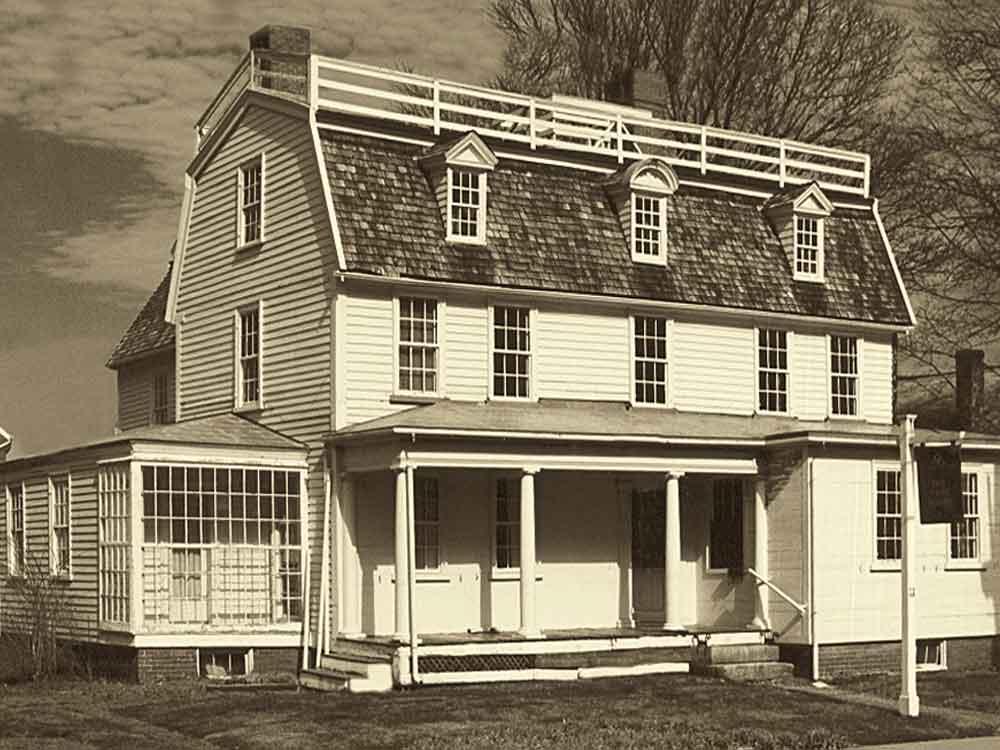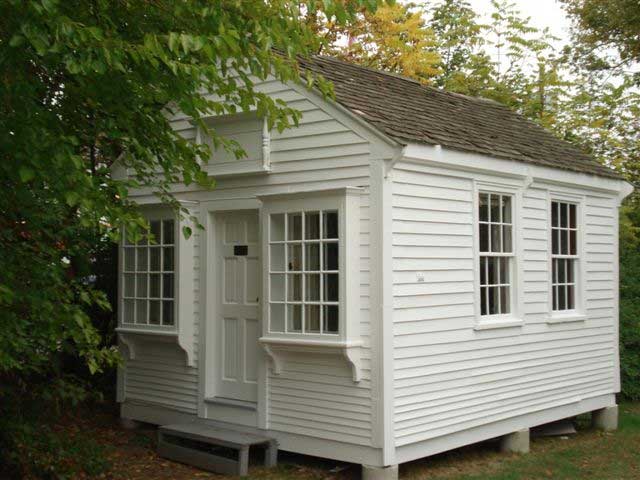The Page House
The Page House has been home to quite a variety of people through the centuries. The original owner and builder was Jeremiah Page, a brick maker who lived there from 1754 until his death in 1806. He fought in the American Revolution as well as serving Danvers as a selectman. It was Jeremiah Page who declared, “no tea would be drunk in his house”, whereupon his wife invited her lady friends up to the roof, saying, “Upon a house is not within it.” This event is immortalized in a poem by Lucy Larcom called A Gambrel Roof. Read more about the accomplished Women of the Page House
Read More
Jeremiah’s son John took over the family business, and also served in the General Court from 1823 until 1833. He and his wife, Mary Fowler Page, and their nine children, lived in the Page house in the early 1800’s. John’s son John C. became the most notorious resident as he and a gang attempted to rob the Village Bank, next to the house, when it was located on Elm Street. The attempted robbery failed and his father found him lying shot to death on the front lawn of his home. (These facts are disputed by historian Richard Zollo who felt that it was a prank gone very wrong.)
Probably the most influential person to occupy the house was Anne Lemist Page, born in 1828, the third generation Page to live there. She was a forerunner in educating kindergarten-aged children and used the Froebel method in the 1860’s. Miss Page believed in teaching in an atmosphere of discovery, growth and warmth, a very different approach in that era. Although many of us think phonics is a 20th century innovation, she taught that method through rhyming songs. Her philosophy on teaching became so popular that she began training young women to become teachers. One of her teacher training students was Annie Mosely Perry who founded the Perry Normal School. At the age of 69, Miss Page, not satisfied with what was available for young children, came out of retirement and opened a free kindergarten. She also served on the Danvers School Committee.
The Danvers Historical Society acquired the Page House, originally sited on Elm Street, in 1914. Fortunately for Danvers, the Society saved the house from being razed as stated in the will of Anne Page. She requested that the house be demolished to avoid it falling into disrepair. The Society went to court to change her will and was able to purchase the house with the promise that it would preserve the property. The historical society held its meetings at the Page House until Tapley-Memorial Hall was built next door in 1930.


